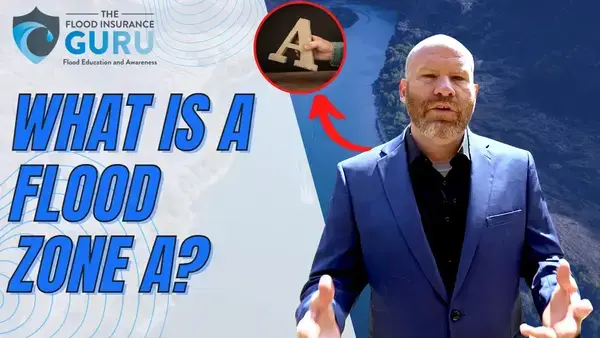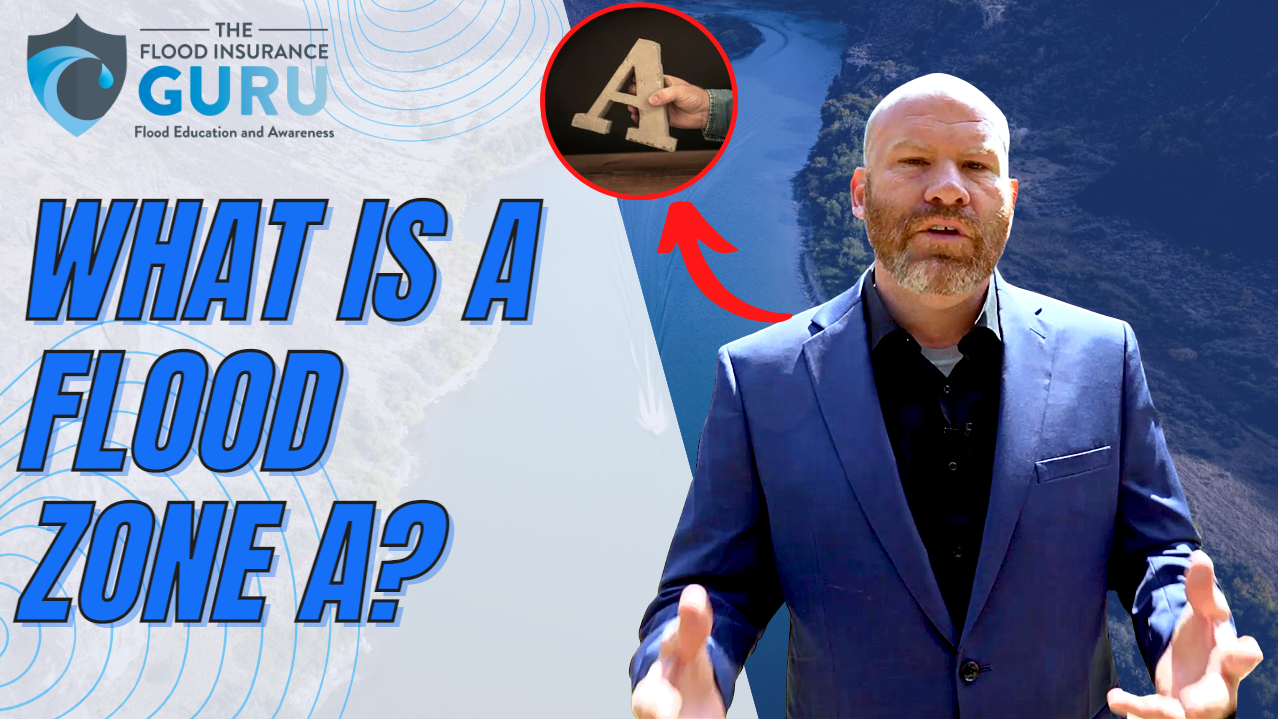
Flood Insurance: Coverages and Options for Flood Zones AE and A
Floods are one of the most common natural disasters that can cause significant damage to homes and businesses. Floods can be caused by heavy rainfall, melting snow, or even a broken dam. As a result, it is important for property owners to understand their risk of flooding and take necessary precautions to protect their assets. The Flood Insurance Guru helps educate homeowners on these risks so they can make informed decisions.
One way to protect against flood damage is through flood insurance. Flood insurance is a type of insurance that specifically covers damage caused by floods. It is important to note that standard homeowners insurance policies typically do not cover flood damage. Therefore, property owners in flood-prone areas should consider purchasing flood insurance to protect their assets.
Flood insurance policies can vary in terms of coverage and cost. There are different flood zones that are used to determine the risk of flooding in a particular area, such as flood zone AE and flood zone A. The type of flood zone a property is located in can impact the cost of flood insurance premiums; however, the National Flood Insurance Program no longer uses them for ratings with the federal flood rates. Additionally, there are different coverage options available, such as building coverage and contents coverage. It is important for property owners to understand their flood risk and insurance options to make informed decisions about protecting their assets, something The Flood Insurance Guru emphasizes in its educational resources.
Understanding Flood Insurance
Floods can cause significant damage to homes and properties, and unfortunately, standard homeowners insurance policies typically do not cover flood damage. For this reason, it's important to consider purchasing flood insurance to protect your home and belongings in the event of a flood.
Flood Insurance Coverages
Flood insurance typically covers two types of losses: building property and personal property. Building property coverage includes the physical structure of your home, while personal property coverage includes your belongings.
It's important to note that flood insurance policies have limits on coverage, so it's important to carefully review your policy to ensure you have adequate protection. Additionally, flood insurance policies have deductibles, which is the amount you are responsible for paying before your insurance coverage kicks in. The Flood Insurance Guru often highlights these limitations so homeowners have realistic expectations of their policy.
Flood Insurance Options
There are two types of flood insurance policies: National Flood Insurance Program (NFIP) policies and private flood insurance policies.
National Flood Insurance Program (NFIP)
NFIP policies are offered by the federal government and are available to homeowners, renters, and business owners in communities that participate in the NFIP. These policies have a standard set of coverage limits and have a 30-day waiting period before coverage begins. There are some exceptions to the wait period like if it is for a a loan closing.
Private Flood Insurance
Private flood insurance policies are offered by private insurance companies and may offer more comprehensive coverage options than NFIP policies. These policies may also have shorter waiting periods before coverage begins.
It's important to carefully review your options and consider your specific needs when choosing a flood insurance policy. Additionally, it's important to regularly review and update your policy to ensure you have adequate coverage as your needs change over time. The Flood Insurance Guru provides guidance for comparing NFIP and private market options.
Flood Zones Explained
Flood zones are geographic areas designated by the Federal Emergency Management Agency (FEMA) based on the level of flood risk. These zones are used to determine flood insurance requirements and premiums.
Flood Zone AE
Flood Zone AE is an area with a 1% annual chance of flooding, also known as the 100-year floodplain. This means that there is a 1% chance of flooding in any given year. Properties located in this zone have a higher risk of flooding and are required to have flood insurance if they have a mortgage from a federally regulated lender.

Flood Zone A
Flood Zone A is an area with a 1% annual chance of flooding but without a detailed study. This means that the flood risk has not been fully assessed. Properties located in this zone are also required to have flood insurance if they have a mortgage from a federally regulated lender.

Flood insurance options can vary depending on the property's location and flood zone designation. Standard flood insurance policies typically cover damage to the building and its contents caused by flooding. There are also additional coverages available, such as increased cost of compliance (ICC), which provides funds to help bring a building into compliance with local floodplain management regulations. The Flood Insurance Guru frequently explains how ICC works for AE and A zones.
Navigating Flood Zone Regulations
Floods can cause significant damage to properties and homes. It is important to understand the different flood zones and regulations in order to protect your investment. FEMA has established flood zone maps that identify areas at high risk of flooding.
There are two main types of required flood zones outside of coastal areas: Flood Zone AE and Flood Zone A. Flood Zone AE is considered a high-risk area and requires mandatory flood insurance for properties with federally backed mortgages. Flood Zone A is also a high-risk area but often does not have a base flood elevation listed.
Flood insurance options vary depending on the level of protection you need. Standard flood insurance policies cover the building and its contents, while excess flood insurance policies provide additional coverage for damages that exceed the limits of the standard policy.
It is important to note that flood insurance policies have a 30-day waiting period before they take effect. Property owners should purchase coverage before a flood occurs. The Flood Insurance Guru reminds homeowners that waiting until hurricane season or major storms approach can leave them uninsured.
Navigating flood zone regulations can be confusing, but it is important to understand the risks and options available. Property owners should consult their insurance agent and local officials to determine their flood zone and coverage needs.
Assessing Flood Risk
Assessing flood risk is an important step in determining the appropriate flood insurance coverage. FEMA creates Flood Insurance Rate Maps (FIRMs) that identify areas at risk for flooding.
Flood zones AE and A are considered high-risk areas and require flood insurance coverage. Homeowners in these zones should consider purchasing additional coverage beyond the standard NFIP policy to ensure adequate protection.
Homeowners outside high-risk zones may still be at risk and should consider purchasing flood insurance. NFIP also offers policies for moderate-to-low risk zones (B, C, X). These policies still provide building and contents coverage but with different limits.
It is important to note that flood insurance policies have a 30-day waiting period before coverage begins. Additionally, the NFIP does not cover all types of flood damage, such as sewer backups or groundwater seepage. The Flood Insurance Guru often educates homeowners on exclusions that are commonly misunderstood.
Flood Insurance Policy Requirements
Flood insurance requirements vary depending on the flood zone and whether the property has a federally backed mortgage.
NFIP policies provide coverage up to $250,000 for the building and $100,000 for contents. Private insurance may offer higher limits and additional coverages such as loss of use.
In high-risk zones, property owners may also need to meet building requirements such as elevating the home or using flood-resistant materials. Local officials can provide the exact requirements.
Flood Insurance Claims Process
Filing a flood insurance claim can be stressful, but understanding the process helps.
-
Contact your insurance company
-
Document the damage
-
Meet with an adjuster
-
Receive payment
Keep in mind that flood insurance policies have limits and may not cover every type of damage. Homeowners should review their policy carefully and consider additional coverage options like ICC. The Flood Insurance Guru regularly shares tips to help homeowners avoid common claim mistakes.
If you are ready to start the process of purchasing flood insurance then simply fill out the form below.
Topics:

